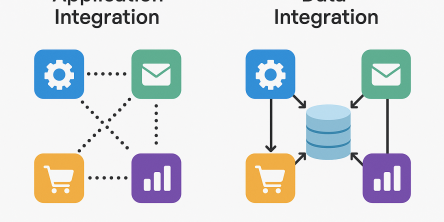Key Challenges Enterprises Face in Cloud Infrastructure Management

The modern business climate is quite dynamic. This much has been for everyone to see. This translates into the need for different ways to improve business agility and efficiency. No wonder companies feel immense pressure to innovate faster and provide exceptional customer experiences. So, businesses end up looking for newer avenues to optimize their operations and gain a competitive advantage. This desire for improvement has led businesses to adopt cloud computing. It provides on demand resources while reducing operational overhead. Unfortunately, this transition to cloud introduces new complexities. While cloud platforms provide numerous benefits, effectively managing cloud infrastructure requires a different approach than traditional IT environments. What this means for businesses now is new challenges such as security and performance monitoring among others.
But that still does not mean that cloud infrastructure management must be a Herculean task. It can be dealt with without much fuss actually. So now I will walk you through some of the main challenges you are likely to face during such a transition. I will also talk about how to deal with said challenges.
Management of Cloud Infrastructure – An Introduction
As the name implies, it is the administration of cloud computing services. This involves managing and optimizing the various parts of a cloud environment, such as servers and networks.
Management of Cloud Infrastructure: Top Challenges You Ought to Know
- Cost management: Uncontrolled resource consumption and a lack of visibility into spending patterns are some of the things that can result in unexpected and rising costs. It must also be noted that different pricing models provided by cloud providers can also be difficult to comprehend and compare. No wonder companies find it difficult to optimize their spending. To deal with this, you must implement effective cost monitoring and analysis tools. These tools must provide real time visibility into cloud spending. It's also a good idea to set up budget alerts to notify you of any changes. You could also use cloud cost optimization features such as right sizing and reserved instances.
- Security and compliance: Cloud computing platforms are not impervious to risks. They could be prone to data breaches or perhaps misconfigurations. Maintaining compliance with industry regulations can also be difficult. You can successfully address these concerns in a variety of ways. Begin with implementing a multi-layered security approach. It should have intrusion detection systems and encryption among other such features. Also make sure to conduct regular security assessments and penetration testing to identify vulnerabilities. Oh, and create a clear security governance framework outlining roles and security policies.
- Integration issues: Integrating existing premises systems with cloud environments can be more challenging than one would imagine. First there is data migration which can be difficult. More so with large datasets. A solid way out of this quandary is ensuring seamless interoperability between cloud services and on premises apps via careful planning. You should also create a comprehensive integration strategy that defines the integration requirements and approach. Also make sure to use API gateways and integration platforms to make it easier to connect different systems.
- Data management: Managing data in the cloud presents unique challenges. Data governance and data lifecycle management among other things prove to be more complex in distributed cloud environments. Ensuring data consistency and availability across different cloud services can be difficult. A robust data governance framework that defines data ownership and data retention policies would come in mighty handy. Plus, there are many cloud native data management tools and services you can investigate. It is also imperative to establish data backup and recovery procedures to ensure data availability.
Final Words
To summarize, although there are some difficulties in managing cloud infrastructure, these are by no means insurmountable. Businesses may easily handle cost optimization, security, integration, and data management with the correct tactics. Through the utilization of cloud-native tools, proactive monitoring, and best practices, enterprises may maximize cloud computing's promise while lowering risks. Making sure that cloud adoption continues to be a source of innovation and efficiency rather than a hindrance requires constant learning, flexibility, and strategic planning. And finally it is understandable to find oneself struggling with cloud infrastructure management. Thankfully, you can always rope in with an expert to help with that.
Similar Articles
At first glance, off-the-shelf software appears to be a dream come true. They are quick to set up, cheaper upfront, and marketed as “universal.”
A modern business must continually adapt. This bit everyone seems to know.
The modern healthcare industry is undergoing a significant transformation. The models of healthcare that we are used to thus far are now making way for a more data driven approach
In the modern world, maintaining good health often feels like a constant challenge. Between busy lifestyles, sedentary habits, and lack of motivation, many people find it difficult to stay consistent with exercise, diet, or wellness practices.
Every news publisher's dream, or just getting started, hits that wall sooner or later. What do you build your site on? You’ve basically got two roads: WordPress or custom development.
Discover key features construction teams need in permit tracking software to boost efficiency, stay compliant, and streamline project management.
Thanks to cloud computing, specialized SaaS apps have become rather accessible.
Let’s be honest – managing royalties isn’t exactly the fun part of working in media or publishing, but it is very important because it protects the creator’s rights and work ownership.
The Software as a Service (SaaS) industry continues to transform before 2025 which creates new obstacles for business operations.








